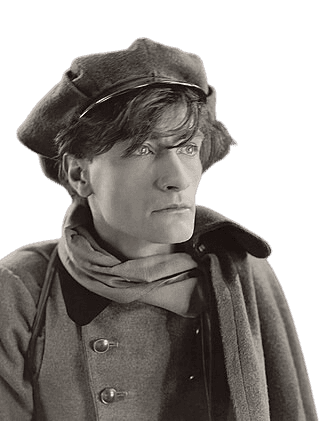Life and achievements
Early life
Antonin Artaud was born to a Greek family in 1896 Marseille, France. His childhood was not very healthy; he was often sick, and at the age of five, he had meningitis. The aftereffects of this illness made Artaud be admitted to the hospital frequently in his lifetime. Artaud was exposed to poetry and mainly read the works of Rimbaud and Baudelaire, which made him explore art. He had his primary education in a Catholic school where he was a loner and had the first signs of mental illness in his teenage years.
Artaud's early life was rather turbulent; at twenty-two, he moved to Paris, where he started attending acting classes at the hand of Charles Dullin, a renowned French director. Artaud's performance and theoretical evolution as an actor were most significant during this apprenticeship period. He joined the surrealist group, but his association with the group was brief because of a disagreement with the group's leader, André Breton. However, the early experiences that Artaud had in the event
Legacy
Artaud's contribution to the theatre world cannot be overemphasized since he is one of the most important pioneers of modern and avant-garde drama. His idea of the Theatre of Cruelty led to the development of a new type of theatre based on the physical, affective, and perceptible rather than the discursive and symbolic. Peter Brook, Jerzy Grotowski, The Living Theatre, and many others took cues from Artaud and used his theories to produce intense plays that gave the audience an experience of their life.
Artaud's work has also influenced other disciplines, such as film, literature, and philosophy. Philosophers like Gilles Deleuze and Félix Guattari adopted his ideas about performance and reality in their works, using the concept of the "body." In poetry, for instance, Allen Ginsberg borrowed from Artaud's idea of madness, performance, and the destruction of meaning to produce his work.
Even though he was a patient with mental illness and drug addiction, Artaud's works are still analyzed and enacted across the world. His ideas about the need to be cruel in the theatre are still not very popular, but they have encouraged many artists who wanted to provoke the public and present the world as it is.
Milestone moments
Oct 21, 1926
Creation of the Théâtre Alfred Jarry.
In 1926, Antonin Artaud, Robert Aron, and Roger Vitrac established the Théâtre Alfred Jarry in Paris. Alfred Jarry is the name behind the theater, which was established to offer a space for performances that were not bound by the conventional norms of French theater.
The company staged plays subversive of social order and did not adhere to the conventional plot.
The Théâtre Alfred Jarry was essential for Artaud as a director and a theorist.
It allowed him to develop the concepts of non-linear narrative and the ability to make the audience feel certain emotions through the senses.
Even though the theater presented only several performances and was closed in 1929, it played a significant role in the development of the avant-garde theater.
It became the basis for Artaud's further development of the Theatre of Cruelty.
Feb 21, 1931
Influence of Balinese Dance.
In 1931, Artaud went to the Paris Colonial Exposition and watched a performance of Balinese dancers there. This experience left a lasting impression on his concept of the theater.
Artaud was interested in the dance's choreography, the music's beat, and its ability to put people into a trance.
He thought this kind of performance, beyond words, was the way to get at the heart of the human emotions that can be expressed in the theater.
It is possible to notice the impact of Balinese dance on Artaud's subsequent ideas regarding the role of gesture, movement, and sound in the theater.
He wanted to produce a performance that, like the Balinese dancers, would stir up the audience's basic instincts by combining the visual and the acoustic.
Mar 13, 1935
The Cenci.
In 1935, Artaud directed The Cenci, an adaptation of Percy Bysshe Shelley's play of the same title, at the Théâtre des Folies-Wagram in Paris.
This was the only primary production Artaud directed in his lifetime according to the principles of the Theatre of Cruelty.
The play was based on the themes of cruelty, incest, and revenge, and the sound and stage techniques were employed to make the play more dramatic and engaging to the audience.
Although the production was not very successful and was criticized for its excessiveness, it can be considered one of the most essential works in Artaud's career.
Cenci demonstrated his concept of a theater that should be able to physically and psychologically compel the audience and make them face the realities of life.
May 9, 1936
Journey to Mexico.
Artaud traveled to Mexico in 1936 to connect with pre-Columbian cultures, which he thought had a better understanding of existence.
While there, he lived with the Rarámuri people in the Sierra Tarahumara and said he had participated in peyote ceremonies.
However, this journey was about searching for spiritual and intellectual experience for Artaud, who thought that modern society was deprived of its primitive instincts.
Artaud's experience in Mexico also strengthened his ideas about the potential of ritual and the need to establish a theater that could provoke people's feelings.
He documented his experiences and used them in his subsequent works, especially those that dealt with the issue of spirituality in performance.
